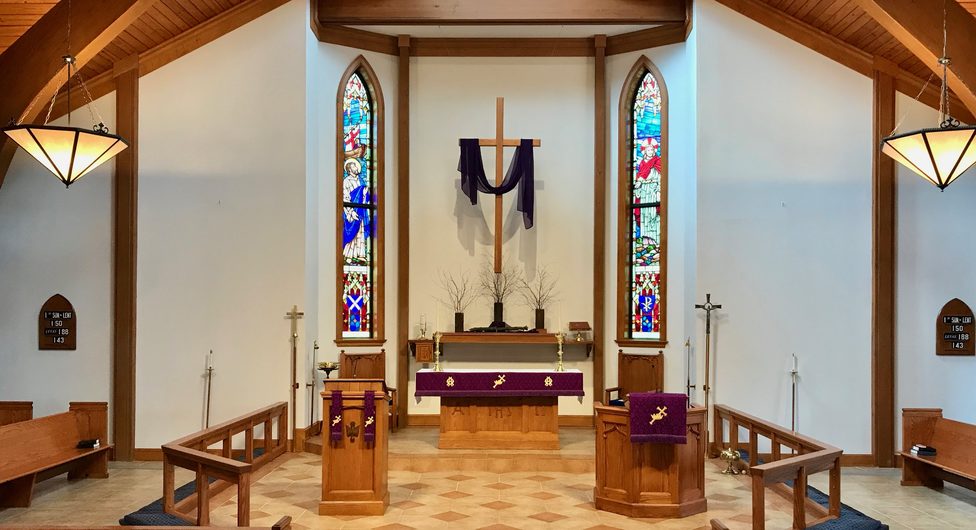Going to an Episcopal Church or any church for the first time may feel a little strange and intimidating. We want you to be able to relax and feel welcome and able to participate as you choose. Every church is a little different, but this reflects what happens in the majority of churches. We hope you will feel comfortable enough to try it out. Below is a guide to some of what you might expect if you go to a worship service at an Episcopal Church.
It’s good to arrive a few minutes before the service so you can get yourself settled. There will probably be ushers or greeters who will give you a bulletin/service leaflet/ program which will guide you through the service. Most churches have pews (long benches) or rows of chairs. You can sit anywhere you would like. Sometimes new people will sit in the back just to check things out. Those of us who are short may like to sit nearer to the front so we can see! In addition to the service leaflet there will often be various books in racks in front of you or in the pews. You will probably see red or black copies of the Book of Common Prayer, sometimes called the Prayer book or the BCP. This book has various portions of the service in it. Your bulletin will give you page numbers to find those sections. You will also probably see a dark blue book called “The Hymnal 1982” which has lots of music in it. Many churches have other supplemental music books as well.
A few minutes before the service there will be some music called the Prelude. It is meant to help us gather ourselves and prepare for the service. Sometimes it is instrumental and other times it is sung by everybody.
Most services start with a song that everyone sings while standing. In many churches there will be a procession of liturgical ministers, people who have specific jobs to do during the service. Usually the procession is led by the cross and you may see people bowing to the cross as it passes by as a gesture of respect.
Once the song is over the presider (the priest leading the service) and the assembly (everyone else) say the Opening Acclamation which is a formal way of greeting one another. Then there may be a short piece of music praising God or asking for God’s mercy. (Music like this which is a piece of the service is sometimes found in the front of the Hymnal in a section where all the number are preceded by “S-“ which stands for Service Music.” The the presider will say a prayer called a collect which is mean to collect us and our thoughts together as the concluding piece of our gathering.
A collection of money is taken at this point. Often a piece of music is sung or played while the collection is being taken. Our offerings symbolize both our bringing of ourselves to worship and our support of the life of the community. It is fine for you to put whatever amount of money in or to put in nothing at all. (You may wonder why so many people don’t put anything in. There are many reasons, of course, but one big one is that many church members make their financial contributions in ways other than putting it in the plate, i.e. through credit card deductions, monthly checks, etc. ) The bread and wine we will use for communion and the money that has been collected are brought to the Altar Table and the liturgical ministers set the Table for Communion.
After everyone had received communion we all stand and say a prayer which your service leaflet will either have printed or tell you where to find it. The priest then asks God to bless us. Another song is usually sung by everyone at this point during which the liturgical ministers may process out. At the very end we are dismissed by a deacon or priest, sent out into the world.
Often there is an instrumental postlude played. It is fine to stand up and leave your seat at this point or you may want to remain and listen to the music. Once the service is concluded people can spend some time talking with each other. Often there is coffee to be enjoyed! People leaving customarily greet the priest at the door and you might want to introduce yourself as a newcomer.
Click the buttom below to download and read a user-friendly guide to worshiping at St. Andrews!
